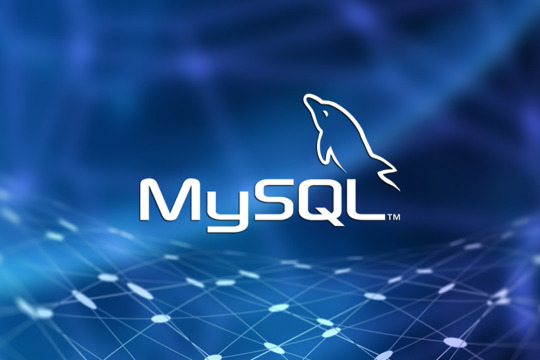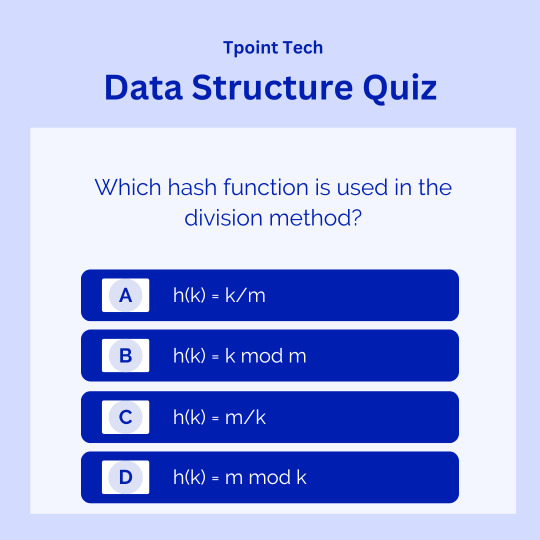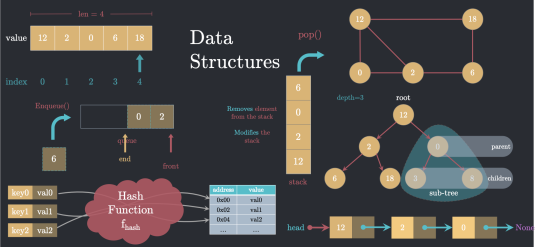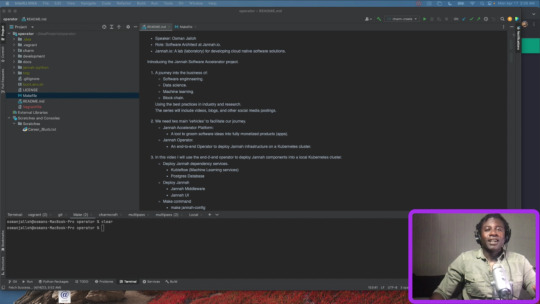#DataStructure
Explore tagged Tumblr posts
Text

URGENT HIRING IT TRAINERS
(ONSITE, FULL TIME)
TRAINING AREAS IN THE FOLLOWING DOMAINS
• C, C++, SQL, PYTHON, IP, HTML5, CSS3, JQUERY, JAVA SCRIPT
• MERN, JAVA (CORE & ADVANCE) & PHP (CORE & FRAMEWORKS CODEIGNITER & LARAVEL)
• DATA STRUCTURES AND ALGORITHMS WITH C++, JAVA & PYTHON
• DATA SCIENCE, ML, DEEP LEARNING, NLP
TOTAL NO. OF POSITIONS: 5 (FIVE)
QUALIFICATION
M.TECH, B.TECH (IT / CS) / MCA TEACHING EXPERIENCE
TEACHING EXPERIENCE
MINIMUM 3 YEARS
NOTE :
1. DELHI CANDIDATES (PREF.)
2. OUTSTATION CANDIDATES CAN ALSO APPLY WHO WILL BE READY TO RELOCATE IMMEDIATELY
SHARE YOUR CV at [email protected]
Contact Us:
9319593915
Veridical Technologies,
www.veridicaltechnologies.com
Aggarwal Prestige Mall, 5th Floor-512, Rd.
Number 44, Rani Bagh, Pitampura,
Delhi-110034
#job#ittraining#webtechnologies#delhi#trainer#faculty#JAVA#python#datascience#dataanalytics#datastructure#php#coding#mern
1 note
·
View note
Text
Scope Computers
🚀 Master Python Programming – From Basics to Advanced! 🐍
Learn Python for AI, Data Science, Web Development, and Automation with hands-on projects and expert guidance.
✅ What You’ll Learn:
🔹 Python basics & OOP
🔹 File handling & databases
🔹 Web scraping & automation
🔹 Data analysis & ML fundamentals
📌 Why Join?
✔️ Practical learning with real-world projects
✔️ Industry-relevant skills
✔️ Ideal for beginners & professionals
🔥 Enroll Now & Start Your Python Journey! 🔥

#scopecomputers#pythondeveloper#datastructure#appdeveloper#javaprogramming#developerlife#coder#javascript#ai#machinelearning#datascience#iot#blockchain#cybersecurity#cloudcomputing#5g#augmentedreality#vr (Virtual Reality)#bigdata#deeplearning#quantumcomputing#digitaltransformation#smartcities#robotics#sustainability#healthtech
0 notes
Text
MySQL Naming Conventions

What is MySQL?
MySQL is a freely available open source Relational Database Management System (RDBMS) that uses Structured Query Language (SQL). SQL is the most popular language for adding, accessing and managing content in a database. It is most noted for its quick processing, proven reliability, ease and flexibility of use.
What is a naming convention?
In computer programming, a naming convention is a set of rules for choosing the character sequence to be used for identifiers that denote variables, types, functions, and other entities in source code and documentation.
General rules — Naming conventions
Using lowercase will help speed typing, avoid mistakes as MYSQL is case sensitive.
Space replaced with Underscore — Using space between words is not advised.
Numbers are not for names — While naming, it is essential that it contains only Alpha English alphabets.
Valid Names — Names should be descriptive of the elements. i.e. — Self-explanatory and not more than 64 characters.
No prefixes allowed.
Database name convention
Name can be singular or plural but as the database represents a single database it should be singular.
Avoid prefix if possible.
MySQL table name
Lowercase table name
MySQL is usually hosted in a Linux server which is case-sensitive hence to stay on the safe side use lowercase. Many PHP or similar programming frameworks, auto-detect or auto-generate class-based table names and most of them expect lowercase names.
Table name in singular
The table is made up of fields and rows filled with various forms of data, similarly the table name could be plural but the table itself is a single entity hence it is odd and confusing. Hence use names like User, Comment.
Prefixed table name
The table usually has the database or project name. sometimes some tables may exist under the same name in the database to avoid replacing this, you can use prefixes. Essentially, names should be meaningful and self-explanatory. If you can’t avoid prefix you can fix it using php class.
Field names
Use all above cases which include lowercase, no space, no numbers, and avoid prefix.
Choose short names no-longer than two words.
Field names should be easy and understandable
Primary key can be id or table name_id or it can be a self-explanatory name.
Avoid using reserve words as field name. i.e. — Pre-defined words or Keywords. You can add prefix to these names to make it understandable like user_name, signup_date.
Avoid using column with same name as table name. This can cause confusion while writing query.
Avoid abbreviated, concatenated, or acronym-based names.
Do define a foreign key on database schema.
Foreign key column must have a table name with their primary key.
e.g. blog_id represents foreign key id from table blog.
Avoid semantically — meaningful primary key names. A classic design mistake is creating a table with primary key that has actual meaning like ‘name’ as primary key. In this case if someone changes their name then the relationship with the other tables will be affected and the name can be repetitive losing its uniqueness.
Conclusion
Make your table and database names simple yet understandable by both database designers and programmers. It should things that might cause confusion, issues with linking tables to one another. And finally, it should be readable for programming language or the framework that is implemented.
#MySQL#DatabaseManagement#SQL#NamingConventions#RelationalDatabase#DatabaseDesign#CodingStandards#TableNaming#FieldNaming#DatabaseSchema#ProgrammingTips#DataManagement#CaseSensitivity#PrimaryKey#ForeignKey#DatabaseBestPractices#OpenSource#DatabaseOptimization#MySQLTips#DataStructure
0 notes
Text
Data Structures in QA Automation: Building Robust Test Frameworks
Build robust test frameworks by utilizing data structures effectively in QA automation. Enhance testing efficiency and reliability.
0 notes
Text
Master Data Structures and Algorithms in Pune
In today's tech-driven world, mastering data structures and algorithms (DSA) is crucial for aspiring developers and engineers. Pune, a booming educational hub, offers exceptional opportunities for students to strengthen their programming skills through specialized DSA classes. These classes focus on developing problem-solving techniques, enhancing coding efficiency, and preparing students for competitive programming and technical interviews.
Data structures like arrays, linked lists, stacks, queues, and trees, combined with algorithms such as sorting and searching, are the building blocks of efficient coding. Whether you’re a beginner or a seasoned programmer looking to refine your skills, enrolling in Data Structure and Algorithm Classes in Pune can significantly boost your career in software development.
These courses provide practical, hands-on learning, preparing you for job roles like software developer, data scientist, and technical lead. Pune's top institutes are known for their experienced trainers, structured curriculum, and placement assistance, making it an ideal destination for learning.
0 notes
Text
#common sense guide to data strcutures and algorithm#datastructure#algorithm#datastructuresandalgorithm#learndsa
0 notes
Text

Test Your Knowledge: Quiz Challenge!!! 📝🧠
Which hash function is used in the division method?🤔
For more interesting quizzes, check the link below! 📚 https://bit.ly/42qN0sr
For the explanation of the right answer, you can check Q.No. 20 of the above link. 📖
0 notes
Text
The Complete Data Structures and Algorithms in Python Udemy Free Course

Welcome to the Complete Data Structures and Algorithms in Python Bootcamp, the most modern, and the most complete Data Structures and Algorithms in Python course on the internet. At 40+ hours, this is the most comprehensive course online to help you ace your coding interviews and learn about Data Structures and Algorithms in Python. You will see 100+ Interview Questions done at the top technology companies such as Apple,Amazon, Google and Microsoft and how to face Interviews with comprehensive visual explanatory video materials which will bring you closer towards landing the tech job of your dreams! Learning Python is one of the fastest ways to improve your career prospects as it is one of the most in demand tech skills! This course will help you in better understanding every detail of Data Structures and how algorithms are implemented in high level programming language.
Data Structures and Algorithms in Python
We’ll take you step-by-step through engaging video tutorials and teach you everything you need to succeed as a professional programmer. After finishing this course, you will be able to: Learn basic algorithmic techniques such as greedy algorithms, binary search, sorting and dynamic programming to solve programming challenges. Learn the strengths and weaknesses of a variety of data structures, so you can choose the best data structure for your data and applications Learn many of the algorithms commonly used to sort data, so your applications will perform efficiently when sorting large datasets Learn how to apply graph and string algorithms to solve real-world challenges: finding shortest paths on huge maps and assembling genomes from millions of pieces.
Data Structures and Algorithms in Python
Why this course is so special and different from any other resource available online? The Complete Data Structures and Algorithms Course in Python will take you from very beginning to a very complex and advanced topics in understanding Data Structures and Algorithms! You will get video lectures explaining concepts clearly with comprehensive visual explanations throughout the course. You will also see Interview Questions done at the top technology companies such as Apple,Amazon, Google and Microsoft. I cover everything you need to know about technical interview process! So whether you are interested in learning the top programming language in the world in-depth And interested in learning the fundamental Algorithms, Data Structures and performance analysis that make up the core foundational skillset of every accomplished programmer/designer or software architect and is excited to ace your next technical interview this is the course for you! And this is what you get by signing up today: Lifetime access to 40+ hours of HD quality videos. No monthly subscription. Learn at your own pace, whenever you want Friendly and fast support in the course Q&A whenever you have questions or get stuck FULL money back guarantee for 30 days! Who is this course for? Self-taught programmers who have a basic knowledge in Python and want to be professional in Data Structures and Algorithms and begin interviewing in tech positions! As well as students currently studying computer science and want supplementary material on Data Structures and Algorithms and interview preparation for after graduation! As well as professional programmers who need practice for upcoming coding interviews. And finally anybody interested in learning more about data structures and algorithms or the technical interview process! This course is designed to help you to achieve your career goals. Whether you are looking to get more into Data Structures and Algorithms , increase your earning potential or just want a job with more freedom, this is the right course for you! The topics that are covered in this course. Section 1 – Introduction - What are Data Structures? - What is an algorithm? - Why are Data Structures and Algorithms important? - Types of Data Structures - Types of Algorithms Section 2 – Recursion - What is Recursion? - Why do we need recursion? - How Recursion works? - Recursive vs Iterative Solutions - When to use/avoid Recursion? - How to write Recursion in 3 steps? - How to find Fibonacci numbers using Recursion? Section 3 – Cracking Recursion Interview Questions - Question 1 – Sum of Digits - Question 2 – Power - Question 3 – Greatest Common Divisor - Question 4 – Decimal To Binary Section 4 – Bonus CHALLENGING Recursion Problems (Exercises) - power - factorial - productofArray - recursiveRange - fib - reverse - isPalindrome - someRecursive - flatten - captalizeFirst - nestedEvenSum - capitalizeWords - stringifyNumbers - collectStrings Section 5 – Big O Notation - Analogy and Time Complexity - Big O, Big Theta and Big Omega - Time complexity examples - Space Complexity - Drop the Constants and the non dominant terms - Add vs Multiply - How to measure the codes using Big O? - How to find time complexity for Recursive calls? - How to measure Recursive Algorithms that make multiple calls? Section 6 – Top 10 Big O Interview Questions (Amazon, Facebook, Apple and Microsoft) - Product and Sum - Print Pairs - Print Unordered Pairs - Print Unordered Pairs 2 Arrays - Print Unordered Pairs 2 Arrays 100000 Units - Reverse - O(N) Equivalents - Factorial Complexity - Fibonacci Complexity - Powers of 2 Section 7 – Arrays - What is an Array? - Types of Array - Arrays in Memory - Create an Array - Insertion Operation - Traversal Operation - Accessing an element of Array - Searching for an element in Array - Deleting an element from Array - Time and Space complexity of One Dimensional Array - One Dimensional Array Practice - Create Two Dimensional Array - Insertion – Two Dimensional Array - Accessing an element of Two Dimensional Array - Traversal – Two Dimensional Array - Searching for an element in Two Dimensional Array - Deletion – Two Dimensional Array - Time and Space complexity of Two Dimensional Array - When to use/avoid array Section 8 – Python Lists - What is a List? How to create it? - Accessing/Traversing a list - Update/Insert a List - Slice/ from a List - Searching for an element in a List - List Operations/Functions - Lists and strings - Common List pitfalls and ways to avoid them - Lists vs Arrays - Time and Space Complexity of List - List Interview Questions Section 9 – Cracking Array/List Interview Questions (Amazon, Facebook, Apple and Microsoft) - Question 1 – Missing Number - Question 2 – Pairs - Question 3 – Finding a number in an Array - Question 4 – Max product of two int - Question 5 – Is Unique - Question 6 – Permutation - Question 7 – Rotate Matrix Section 10 – CHALLENGING Array/List Problems (Exercises) - Middle Function - 2D Lists - Best Score - Missing Number - Duplicate Number - Pairs Section 11 – Dictionaries - What is a Dictionary? - Create a Dictionary - Dictionaries in memory - Insert /Update an element in a Dictionary - Traverse through a Dictionary - Search for an element in a Dictionary - Delete / Remove an element from a Dictionary - Dictionary Methods - Dictionary operations/ built in functions - Dictionary vs List - Time and Space Complexity of a Dictionary - Dictionary Interview Questions Section 12 – Tuples - What is a Tuple? How to create it? - Tuples in Memory / Accessing an element of Tuple - Traversing a Tuple - Search for an element in Tuple - Tuple Operations/Functions - Tuple vs List - Time and Space complexity of Tuples - Tuple Questions Section 13 – Linked List - What is a Linked List? - Linked List vs Arrays - Types of Linked List - Linked List in the Memory - Creation of Singly Linked List - Insertion in Singly Linked List in Memory - Insertion in Singly Linked List Algorithm - Insertion Method in Singly Linked List - Traversal of Singly Linked List - Search for a value in Single Linked List - Deletion of node from Singly Linked List - Deletion Method in Singly Linked List - Deletion of entire Singly Linked List - Time and Space Complexity of Singly Linked List Section 14 – Circular Singly Linked List - Creation of Circular Singly Linked List - Insertion in Circular Singly Linked List - Insertion Algorithm in Circular Singly Linked List - Insertion method in Circular Singly Linked List - Traversal of Circular Singly Linked List - Searching a node in Circular Singly Linked List - Deletion of a node from Circular Singly Linked List - Deletion Algorithm in Circular Singly Linked List - Method in Circular Singly Linked List - Deletion of entire Circular Singly Linked List - Time and Space Complexity of Circular Singly Linked List Section 15 – Doubly Linked List - Creation of Doubly Linked List - Insertion in Doubly Linked List - Insertion Algorithm in Doubly Linked List - Insertion Method in Doubly Linked List - Traversal of Doubly Linked List - Reverse Traversal of Doubly Linked List - Searching for a node in Doubly Linked List - Deletion of a node in Doubly Linked List - Deletion Algorithm in Doubly Linked List - Deletion Method in Doubly Linked List - Deletion of entire Doubly Linked List - Time and Space Complexity of Doubly Linked List Section 16 – Circular Doubly Linked List - Creation of Circular Doubly Linked List - Insertion in Circular Doubly Linked List - Insertion Algorithm in Circular Doubly Linked List - Insertion Method in Circular Doubly Linked List - Traversal of Circular Doubly Linked List - Reverse Traversal of Circular Doubly Linked List - Search for a node in Circular Doubly Linked List - Delete a node from Circular Doubly Linked List - Deletion Algorithm in Circular Doubly Linked List - Deletion Method in Circular Doubly Linked List - Entire Circular Doubly Linked List - Time and Space Complexity of Circular Doubly Linked List - Time Complexity of Linked List vs Arrays Section 17 – Cracking Linked List Interview Questions (Amazon, Facebook, Apple and Microsoft) - Linked List Class - Question 1 – Remove Dups - Question 2 – Return Kth to Last - Question 3 – Partition - Question 4 – Sum Linked Lists - Question 5 – Intersection Section 18 – Stack - What is a Stack? - Stack Operations - Create Stack using List without size limit - Operations on Stack using List (push, pop, peek, isEmpty, ) - Create Stack with limit (pop, push, peek, isFull, isEmpty, ) - Create Stack using Linked List - Operation on Stack using Linked List (pop, push, peek, isEmpty, ) - Time and Space Complexity of Stack using Linked List - When to use/avoid Stack - Stack Quiz Section 19 – Queue - What is Queue? - Queue using Python List – no size limit - Queue using Python List – no size limit , operations (enqueue, dequeue, peek) - Circular Queue – Python List - Circular Queue – Python List, Operations (enqueue, dequeue, peek, ) - Queue – Linked List - Queue – Linked List, Operations (Create, Enqueue) - Queue – Linked List, Operations (Dequeue(), isEmpty, Peek) - Time and Space complexity of Queue using Linked List - List vs Linked List Implementation - Collections Module - Queue Module - Multiprocessing module Section 20 – Cracking Stack and Queue Interview Questions (Amazon,Facebook, Apple, Microsoft) - Question 1 – Three in One - Question 2 – Stack Minimum - Question 3 – Stack of Plates - Question 4 – Queue via Stacks - Question 5 – Animal Shelter Section 21 – Tree / Binary Tree - What is a Tree? - Why Tree? - Tree Terminology - How to create a basic tree in Python? - Binary Tree in The Complete Data Structures and Algorithms Course in Python - Types of Binary Tree - Binary Tree Representation - Create Binary Tree (Linked List) - PreOrder Traversal Binary Tree (Linked List) - InOrder Traversal Binary Tree (Linked List) - PostOrder Traversal Binary Tree (Linked List) - LevelOrder Traversal Binary Tree (Linked List) - Searching for a node in Binary Tree (Linked List) - Inserting a node in Binary Tree (Linked List) - Delete a node from Binary Tree (Linked List) - Delete entire Binary Tree (Linked List) - Create Binary Tree (Python List) - Insert a value Binary Tree (Python List) - Search for a node in Binary Tree (Python List) - PreOrder Traversal Binary Tree (Python List) - InOrder Traversal Binary Tree (Python List) - PostOrder Traversal Binary Tree (Python List) - Level Order Traversal Binary Tree (Python List) - Delete a node from Binary Tree (Python List) - Entire Binary Tree (Python List) - Linked List vs Python List Binary Tree Section 22 – Binary Search Tree - What is a Binary Search Tree? Why do we need it? - Create a Binary Search Tree - Insert a node to BST - Traverse BST - Search in BST - Delete a node from BST - Delete entire BST - Time and Space complexity of BST Section 23 – AVL Tree - What is an AVL Tree? - Why AVL Tree? - Common Operations on AVL Trees - Insert a node in AVL (Left Left Condition) - Insert a node in AVL (Left Right Condition) - Insert a node in AVL (Right Right Condition) - Insert a node in AVL (Right Left Condition) - Insert a node in AVL (all together) - Insert a node in AVL (method) - Delete a node from AVL (LL, LR, RR, RL) - Delete a node from AVL (all together) - Delete a node from AVL (method) - Delete entire AVL - Time and Space complexity of AVL Tree Section 24 – Binary Heap - What is Binary Heap? Why do we need it? - Common operations (Creation, Peek, sizeofheap) on Binary Heap - Insert a node in Binary Heap - Extract a node from Binary Heap - Delete entire Binary Heap - Time and space complexity of Binary Heap Section 25 – Trie - What is a Trie? Why do we need it? - Common Operations on Trie (Creation) - Insert a string in Trie - Search for a string in Trie - Delete a string from Trie - Practical use of Trie Section 26 – Hashing - What is Hashing? Why do we need it? - Hashing Terminology - Hash Functions - Types of Collision Resolution Techniques - Hash Table is Full - Pros and Cons of Resolution Techniques - Practical Use of Hashing - Hashing vs Other Data structures Section 27 – Sort Algorithms - What is Sorting? - Types of Sorting - Sorting Terminologies - Bubble Sort - Selection Sort - Insertion Sort - Bucket Sort - Merge Sort - Quick Sort - Heap Sort - Comparison of Sorting Algorithms Section 28 – Searching Algorithms - Introduction to Searching Algorithms - Linear Search - Linear Search in Python - Binary Search - Binary Search in Python - Time Complexity of Binary Search Section 29 – Graph Algorithms - What is a Graph? Why Graph? - Graph Terminology - Types of Graph - Graph Representation - Create a graph using Python - Graph traversal – BFS - BFS Traversal in Python - Graph Traversal – DFS - DFS Traversal in Python - BFS Traversal vs DFS Traversal - Topological Sort in The Complete Data Structures and Algorithms Course in Python - Topological Sort Algorithm - Topological Sort in Python - Single Source Shortest Path Problem (SSSPP) - BFS for Single Source Shortest Path Problem (SSSPP) - BFS for Single Source Shortest Path Problem (SSSPP) in Python - Why does BFS not work with weighted Graphs? - Why does DFS not work for SSSP? - Dijkstra’s Algorithm for SSSP - Dijkstra’s Algorithm in Python - Dijkstra Algorithm with negative cycle - Bellman Ford Algorithm - Bellman Ford Algorithm with negative cycle - Why does Bellman Ford run V-1 times? - Bellman Ford in Python - BFS vs Dijkstra vs Bellman Ford - All pairs shortest path problem - Dry run for All pair shortest path - Floyd Warshall Algorithm - Why Floyd Warshall? - Floyd Warshall with negative cycle, - Floyd Warshall in Python, - BFS vs Dijkstra vs Bellman Ford vs Floyd Warshall, - Minimum Spanning Tree, - Disjoint Set, - Disjoint Set in Python, - Kruskal Algorithm, - Kruskal Algorithm in Python, - Prim’s Algorithm, - Prim’s Algorithm in Python, - Prim’s vs Kruskal Section 30 – Greedy Algorithms - What is Greedy Algorithm? - Well known Greedy Algorithms - Activity Selection Problem - Activity Selection Problem in Python - Coin Change Problem - Coin Change Problem in Python - Fractional Knapsack Problem - Fractional Knapsack Problem in Python Section 31 – Divide and Conquer Algorithms - What is a Divide and Conquer Algorithm? - Common Divide and Conquer algorithms - How to solve Fibonacci series using Divide and Conquer approach? Read the full article
0 notes
Text

ARRAY & LINKED LIST 👨🦱
Linked lists are less rigid in their storage structure and elements are usually not stored in contiguous locations, hence they need to be stored with additional tags giving a reference to the next element👩💻
Arrays store elements in contiguous memory locations, resulting in easily calculable addresses for the elements stored and this allows faster access to an element at a specific index💻
➡️ If you want to start your career into the field of data science, ML and AI visit here-- www.tutort.net 📍
0 notes
Text
Scope Computers
Python Programming Course: Learn, Code, Excel
This course covers everything from Python basics to advanced topics like OOP, databases, and web development.
Why Join?
✅ Hands-on projects & real-world applications
✅ Skills for data science, automation, and AI
✅ Learn top libraries: NumPy, Pandas, Flask, Django
✅ Structured assessments & career-focused training
Perfect for students, professionals, and tech enthusiasts looking to master Python.

#scopecomputers#pythondeveloper#datastructure#appdeveloper#javaprogramming#developerlife#coder#javascript#ai#machinelearning#datascience#iot#blockchain#cybersecurity#cloudcomputing#5g#augmentedreality#vr (Virtual Reality)#bigdata#deeplearning#quantumcomputing#digitaltransformation#smartcities#robotics#sustainability#healthtech
1 note
·
View note
Text
Assistance with Data Structure Assignments
Computer science students must comprehend data structures. This topic is crucial to computer science, thus you should know it. If not, our data structure assignment help is best.
Our data structure assignment clarification services eliminate confusion.
Programming students must create, analyse, and implement algorithms and data structures to address engineering problems.
All data structure courses and projects assume students can solve any data structure challenge. Data structure assignments are among the hardest for students. Students today must do extracurriculars, work part-time, and do assignments on time.

Data structures help organise digital data in computers. The most popular data structures include arrays, stacks, queues, linked lists, and trees. Data structures organise data to enhance storage, retrieval, manipulation, and management.
The two main complimentary aims of data structure are:
Determining the class of difficulties that functional mathematical operations can address for altering data entities and the best representations for abstract operations.
Linear data structures include arrays, stacks, queues, and linked lists.
Common data structure operations include:
Traversing a structure to access data items
Searching a collection for information
Insertion and deletion: Adding or removing data from an existing collection
Sorting requires ordering data.
merge: combining two structures.
Find out how data structure types differ from data types and more by reading on.
#dissertation#essay#thesis#programming#best assignment help#case studies#helpdesk#information technology#essaywriting#students#datastructure#datascience#dataanalytics
0 notes
Text
The True Cost of Bad Data and How It Can Hinder the Benefits of AI #datacleansing #datagovernance #datamining #dataquality #datastructure
0 notes
Text
The True Cost of Bad Data and How It Can Hinder the Benefits of AI #datacleansing #datagovernance #datamining #dataquality #datastructure
0 notes
Text
DevOps with Artificial Intelligence, Automation, and Blockchain: Introductory Part 2
Video Highlights – Jannah.io is indeed, a money making venture. Jannah.io is deployed together with Kubeflow, on Kubernetes. Kubeflow, a collection of tools for scripted Machine Learning Pipelines. Jannah uses Kubeflow’s Tensorflow service to model itself using logs data. By modeling itself (boot layer, network layer, storage layer, etc) from empirical data, Jannah.io will become a…

View On WordPress
#algorithms#application#Data#databases#datastructure#deepdive#design#designpatterns#dev#development#devOps#django#experience#javascript#jupyter#kotlin#kubeflow#mobile#object#objectorientedprogramming#operations#oriented#patterns#python#showcasing#storage#structure#swiftui#tensorflow#videoseries
0 notes